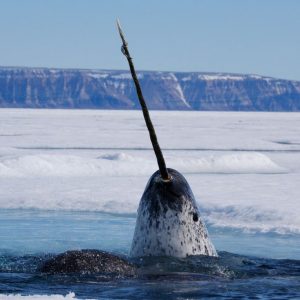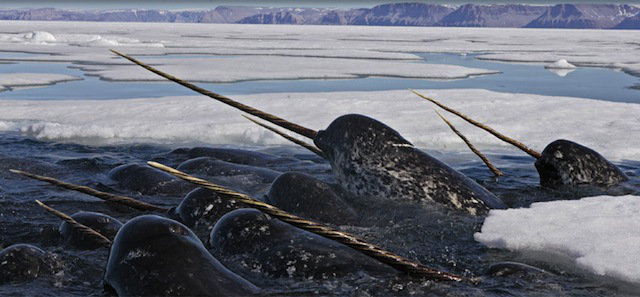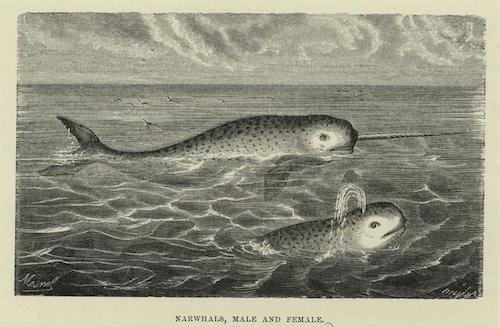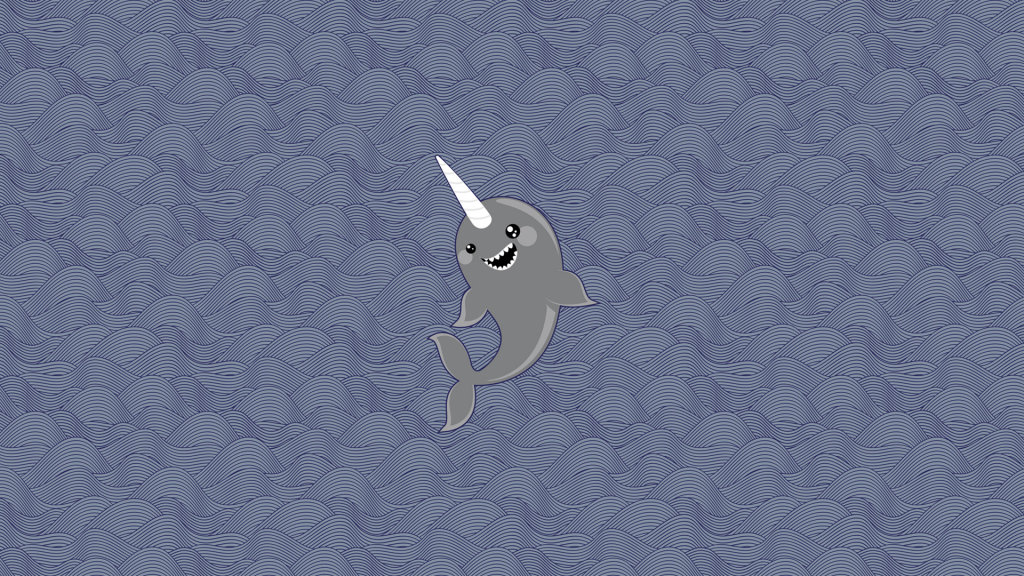The Narwhal (Monodon monoceros) is a member of the toothed whale family and most closely related to Beluga Whales and the Bottle Nosed Dolphin.
The most conspicuous trait which earned the Narwhal the nickname of “Unicorn of the Sea” is, of course, the large spiral tusk that protrudes from the heads of all males and some females. Measuring anywhere from 5 to 10 feet long, this tusk is actually a highly crooked canine tooth that usually grows from the left side and pierces through the Narwhal’s upper lip. (somebody call an orthodontist!) The tusk grows through the whale’s life and has stumped scientists from the beginning. It is thought that Narwhal tusks that ended up in Europe helped perpetuate myths of the Unicorn of the hoofed variety.
Recent drone footage has shown some Narwhals using their tusk to slap fish and thus stunning them and making for an easy meal, yet it cannot be the primary hunting method since all of the females who do not have a tusk are still able to feed themselves. The major consensus is that the Narwhal’ s tusk is for the very important task of showing off! That’s right, just like large antlers or a peacock’s feathers it’s a way to attract members of the opposite sex.
When Narwhals aren’t showing off, they spend their winters out in the deep waters among the sea ice of the Arctic regions around Northern Canada, Russia and Greenland. The Narwhals employ a risky strategy to avoid other Orcas and food competition by relying on the few openings in the icepack to be able to surface and breathe. When this works they are able to dive more than a mile deep and feed on halibut and cod for up to 20 minutes at a time and can repeat these dives 15 times in a single day. To stay down for so long Narwhals have adapted to only have slow-twitch muscle, can shunt their blood away from non-vital organs and have very high levels of myoglobin in their blood stream. This combination allows the whales to hold more oxygen and consume it a much slower rate. But if conditions on the surface rapidly change they can sometimes become trapped under the ice with nowhere to catch a breath.
During the Summer months, Narwhals will come closer to shore and spend time in shallower water and in fjords, but unlike many whales and porpoises they do not really migrate for tropical vacations. Instead they tough it out in relatively cold water year round.
Bonus: Get your own PDW Narwhal Screen Saver HERE!





